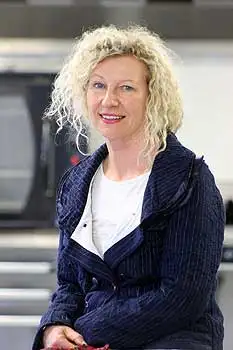
The study was focused on malnutrition risk of people over the age of 65.
A recent study involving people over the age of 65 in New Zealand, Canada and the Netherlands shows two thirds of the participants are at high risk of malnutrition.
The paper aimed to identify differences in nutritional risk across the three countries and the findings of Cross-Country Differences and Similarities in Undernutrition Prevalence and Risk as Measured by SCREEN II in Community-Dwelling Older Adults, was recently published by the Multidisciplinary Digital Publishing Institute.
A total of 13,340 participants used the validated online nutrition screening tool (SCREEN II) to respond to 14 potential risk items which were scored to determine the degree of malnutrition risk from the total scores. It is the first time a study of this kind has been completed with this number of people.
The study concluded that nutrition risk is a world-wide, highly prevalent problem among older adults living in the community, but risk factors contributing to nutrition risk differ by country.
Professor of Public Health Nutrition Carol Wham was involved in the study and says identifying nutrition risk is important to prevent or treat undernutrition which may lead to adverse health outcomes.

Professor Carol Wham.
The results found that of the participants, 68.2 per cent of older New Zealanders, 61.5 per cent of Dutch and 70.1 per cent of Canadians, were at risk of malnutrition.
Professor Wham says the largest risk factor for New Zealanders was a low intake of dairy - 65.4 per cent said they have one portion or less a day – while 57.1 per cent only ate meat, eggs, fish or a meat substitute once a day or less. She says this is surprising given the country is such a big producer of meat and dairy.
She says the results will help to raise awareness of what is actually happening.
“Because we are such a big dairy and meat producing nation, there is probably a lot of assumption that communities have access to meat and dairy and that older people are eating sufficient amounts. But when we see that two thirds of respondents are not eating more than one serve a day, it raises more questions than answers.”
She says meeting the daily recommended intake for meat (at least one serving a day) and dairy (at least three serves a day) is directly linked to people’s intake of protein, calcium and other important nutrients needed for maintaining muscle and bone strength
“If older adults have a low intake of calcium, it can have a detrimental impact on their bones and that is a serious problem.
“When you consider an older person at risk of malnutrition, this can mean they lose their lean muscle mass and if that happens, they lose their strength. If they have no strength they aren’t able to walk or shower or function independently. This is why we are wanting to understand the risks around malnutrition so we can help to keep older adults independent and healthy, for longer.”
The study did not go into the detail of asking people why they answered what they did, but Professor Wham says researchers can speculate. She suspects high prices for meat and dairy may be one barrier for people, while other factors may be oral health and wearing dentures which makes it harder to eat meat.
Other risk factors for Kiwi’s included problems with doing groceries, problems with biting or chewing and that meal preparation is either hard or they do not enjoy doing it.
For Canadians, the biggest risk factors included low dairy intake, perceptions around body weight and limitation or avoiding certain products. In the Netherlands, the highest risk factor was a low daily intake of fruit and vegetables.
A separate piece of research into the eating habits of older New Zealanders published late last year suggested that eating alone, caring for a sick spouse, and thinking that it was logical to eat less because they were doing less, were also key factors for risk of malnutrition.
Professor Wham has dedicated much of her recent career to better understanding malnutrition and modifiable risk factors in older adults and she says further research into adult nutrition is required.
“These are people’s mothers, fathers and grandparents that we are talking about. My passion is to use research to improve the lives of older people. If they’re not eating well, how can they maintain good health? We spend so much money at the treatment end when we could be much more proactive and address factors that are preventable - that’s why I’m doing this research because it is a serious issue that needs to be sorted.”